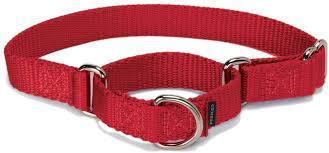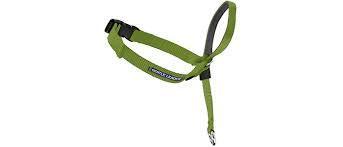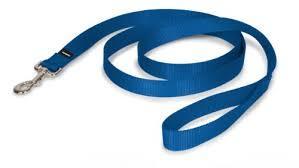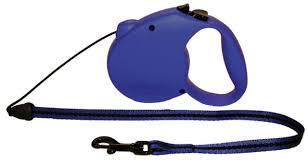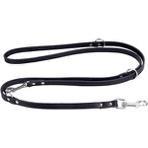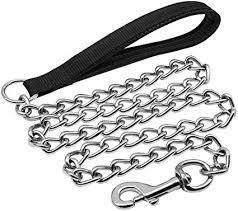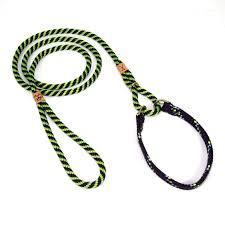
You need to pick up a new collar from the pet store, as your little friend has just worn through their last one—the same one they’ve had since they were a few months old! All you need is a collar and leash… but once you find the right aisle, a paradox of choices kicks in. Is a standard collar maybe not enough? Your pup seems to have trouble keeping focused while outside, so maybe something sturdier. But is that chain-link collar a little much? And what about those harnesses? A rubik’s cube of clips and straps that look more like you’re about to take little Fido skydiving than around the block. Which one do I walk away with today?
Most collars, harnesses, and leashes are designed for two functions: keeping your dog secure and assisting you with their training. How much security and assistance you need will depend both on the type of area you live in—metropolitan areas will generally beg more security, plus often require you to leash your pet — and how far along your pet is in leash training. With this handy guide, you will understand the pros and cons of the common types out there and feel empowered to choose which one will best suit you and your pet.
Collars.
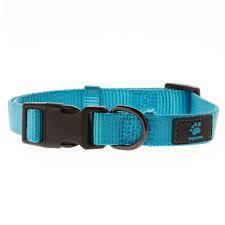
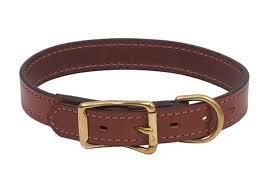
Standard Collar
These collars are made of nylon or leather and have a buckle or plastic snap closure, plus a metal ring to attach leashes and ID tags. Standard collars are for any breed, age, or size of dog.
If these collars aren’t appropriately fitted, they can easily come off or snap apart. If a dog tends to pull, they can also put a lot of pressure on their trachea. Giving corrections on a dog wearing a standard collar can be very hard on their neck in the long run, nor will it prove very effective toward changing their behavior. With that in mind, the standard collar’s purpose is for identification and isn’t recommended as the sole collar for walks.
Martingale Collar
This collar features a loop of material with a metal ring at each end, which in turn holds a smaller loop with a ring for attaching a leash. The martingale collar has a mechanism that prevents the collar from closing completely around the dog’s neck, so it is a gentler alternative to choke chains and prong collars when training against pulling. This is most ideal for dogs who try to escape their collars, and is a good moderate choice for both security and training assistance.
Head Halter Collar, or Gentle Lead
It fits around the dog’s neck and sits high on the head, just behind the ears. The second straps fit around the muzzle, and the leash attaches to this loop. This leash’s function is to give gentle corrections to pets in a way that doesn’t put pressure on their neck or throat by gently redirecting them by the snout. These collars are ideal for adult dogs who jump or pull while on walks. While the loop for the snout may remind you of a muzzle, don’t worry! The loop around the snout will not restrict your dog from opening their mouth. If your dog is larger and heavier, however, a gentle lead on its own might not offer enough security while taking them for a walk. And it should go without saying that type is not particularly effective on flat-nosed dogs.
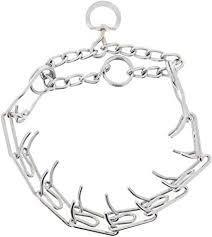
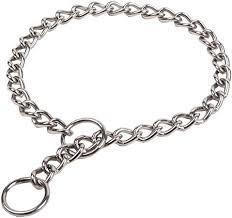
Aversive Collars
Aversive collars refer to metal collars such as choke chains or prong/pinch collars. While the idea behind these collars is to train dogs through painful reinforcement, these collars fail to help dogs understand how to behave properly. As we understand more about how dogs learn best, aversive collars are considered inhumane and not to be recommended unless as a last resort. Consult with an experienced trainer or behaviorist before using.
Smart Collars
These hi-tech collars connect to your phone and can keep you updated on your pet’s activities with GPS tracking. While these collars are not used for securing your pet during their walks, but more for providing real-time updates on where your pet is and how much exercise they’re getting during the day. While trendy and useful for everyday monitoring, if you need something for their walk it’s better to look elsewhere.
Harnesses
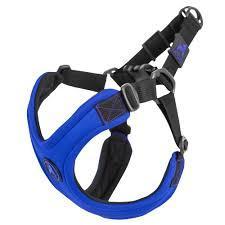
Back-Clip Harness
This type is most common since they’re easy to use and comfortable for most dogs. It avoids putting pressure on a dog’s neck by supporting them around the chest and shoulders. If your dog is already comfortable walking alongside you, then this style of harness is for you. If your dog is a puller, consider a gentle lead collar or a front clip harness. This style of harness is also good for small dogs with short legs or puppies, as leads attached to their chest can easily get underfoot.
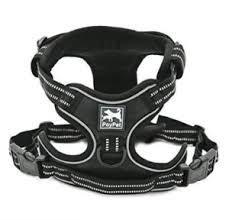
Front Clip Harness
Front clips are very effective for dogs in training. Since the leash clips onto the ring on the dog’s chest they will not be able to pull forward easily. When the dog pulls and the walker applies a correction on the leash, the dog is pulled off-balance. This reinforces to the dog that they will stumble when they pull, and this helps dissuade them from that behavior in the future. This is a very good combination of security and assistance, and is especially good if you want to run with your dog!
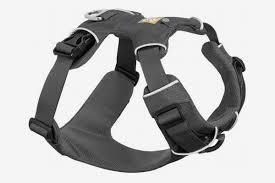
Duel Clip Harnesses
This harness gives you the option and benefits of both front and rear clips. While the rear clip is supposed to be the “dominant” attachment for guiding the walk, the front-clip comes into play when the dog tries to pull, giving the owner more control. This offers the walker versatility, as you can easily switch out which clip to use based on your pet’s progress in training. While you can use any one clip choice at any time, using both clips at once is helpful if you have a particularly large, strong breed going through training.
Leashes
Standard leashes
Most standard leashes are made of nylon or leather and have a single loop at the end for holding. Some also come with additional loops in the middle or opposite end to give the walker more control. These leashes are versatile and effective for everyday walks with dogs of all ages, sizes, and breeds. They can even come in a variety of lengths, as little as four feet to as long as eight feet. Yet the standard leash can be vulnerable to wear and tear if your pet likes to chew on them—supple leather especially can be very enticing to a teething dog. Overall, if you need a new leash in a pinch then your standard leash is a good choice by far.
Retractable Leashes
This leash allows the walker to control the leash’s length via retractable cord, giving the dog more freedom to explore. These leashes work like tape measures, extending from four to 30 ft at most, with a locking mechanism to keep the cord in place when needed.
While these leashes are widely available and popular, they pose many problems. These are ideal for dogs skilled at walking alongside you without pulling or chasing. For dogs who tend to pull or chase, a retractable leash can reinforce these unwanted behaviors and allow the dog to potentially break the lock mechanism or the cord. This lead is also better for smaller and lighter dogs since you can only hold the leash in the fingertips of one hand. While the cord can extend for tens of feet for additional freedom, it’s risky to allow your pet wander out too far in case of an emergency. Finally, be careful when holding the cord! This part of the leash has been known to cause injuries when held or wrapped around fingers.
Overall, retractable leashes are not recommended, as they pose more opportunities for accidents on yours and your pet’s part than the other leashes on this list.
Adjustable Leash
This type of leash aims to offer the handler the aspects they like in both the standard and retractable leashes, without the downsides of a retractable leash. While they come in lengths of three feet to six feet, the leash’s length can be adjusted by clipping the end onto one of three rings, shortening or lengthening as desired. These leashes are also good for walking two dogs at once, or if you need to tether your pet for any reason. Some adjustable leashes can even create a large enough loop for the walker to slip it over their shoulder for hands-free walking.
Chain Leashes
Chain leashes are the most indestructible leashes out there, and are a decent choice for larger dogs who need a little more security, or as an aid to train against pulling behavior. Pulling is discouraged on these leashes as unlike leather or nylon, the chain leash has no stretch. After the pulling behavior is subsided, some switch back to nylon or leather leashes. These are also a good choice for dogs who are teething and like to chew apart their leashes, as they will definitely dislike the mouthfeel of metal. The chains can come in different gauges from thin, light links to thick, heavy chains. Be careful while handling, as chains can be very rough on your hands!
The Martingale Lead
This leash is a combination leash and martingale collar, with the benefits of each, and is used most commonly as a training tool to prevent dogs from pulling. The leash tightens each time the dog pulls, with a locking mechanism to prevent the collar from choking or harming the dog. This leash is used often in dog shows and animal rescues for their ease and effectiveness.
Once again, choosing which of these options is best for you and your pet reduces to two questions: how much security does my pet need, and how much assistance do I need in their training? With that in mind, and with the help of this guide, you should feel more empowered to make the best decision for your pet that will hopefully last you for many walks into the future.
Windy City Paws is a Chicago dog walker and petsitter committed to providing helpful information to Chicago dog owners through its blog.

